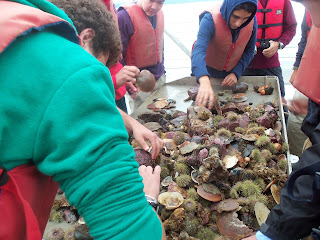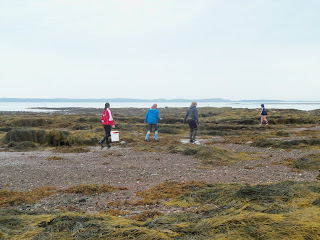Next the students did a bell ringer lab quiz to test just how much information they have retained from this week’s immersion into marine biology. While the teachers were setting up the quiz the students could be found all over lower campus cramming and quizzing each other on terms such as Arthropoda, aboral, and madreporite. I think they were pleasantly surprised by the amount of information they have learned.
To round out the morning we conducted a barnacle behaviour lab with the students. During this lab the students subjected barnacles to temperatures of saltwater from 5°C to 25°C to determine how this affects their feeding rate.
After lunch the students put all of the information they have learned about the marine environment and the animals that live there to the test to develop their own behaviour labs. Some of the labs included: the effects of light on sea stars, strength of sea urchin tube feet, and a survey of green crabs at Holey Point.
It is hard to believe Ashbury’s week with us is over already. Thank you for a great week. Have a safe trip back to Ottawa and have a wonderful school year!
Tracey showing the students a Waterthrush
at the banding station.
Sweating through the bell ringer quiz.
Testing the effect of temperature on the feeding rate of barnacles.















































